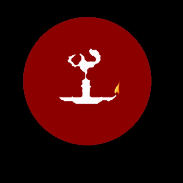An outlook of India
India in dates
3rd century B.C.: The first civilization appears in the Indus Valley
2nd century B.C.: The Aryans migrate to the South of the country and the Dravidian culture appears, as well as the sacred texts and the caste system.
1st century B.C.: Buddhism and Jainism appear in India. The period of emperor Ashoka’s reign allows the spreading of Buddhism across Maurya Empire.
From 1st to 3rd century A.C.: A big cultural mix happens and Hinduism becomes the prevailing religion of the country.
From 6th to 15th century: Islam comes to India and conflicts emerge in several parts of the country, including in Rajasthan with the ongoing battles of the Rajputs.
16th century: the Portuguese settle in Goa and keep the city until 1961.
From 16th to 18th century: The Mughals control a great part of India. Their sovereignty is characterized by grandiose art, architecture and literature. The influence of the great Mughal emperors can especially be noticed in the cities of Delhi, Agra and Fatehpur Sikri.
17th century: The East India Company is founded and the first factories are established in Gujarat and then in Madras, Bombay and Calcutta. At the same period, in 1673, the French settle in Pondicherry and keep the city until 1954.
From 1803 to 1947: India is totally under British control
15 August 1947: India gains its independence but the partition with Pakistan and Bangladesh is inevitable. Jawaharlal Nehru becomes the prime minister of the country. The following years are characterized by the politics of Nehru, who has the difficult task of leading this young democratic republic.
30 January 1948: Ghandi is murdered by a Hindu fundamentalist. For more than 40 years, the Congress Party leads the country thanks to its historical heritage. Despite the corruption and party malfunction problems, the democracy is established and India becomes a great emerging power.
2010: India organizes the Commonwealth Games. On the same year the country welcomes 5.6 million tourists.
May 2014: A big political change begins during the Indian democratic elections. Between community tensions and growing inequalities, India is in a state of crisis and the Congress Party suffers from its inefficiency. Looking for hope, India wishes to take up its modern challenges thanks to a new man: Narendra Modi (from the BJP).
India in figures
-
1.26 billion inhabitants
-
World’s 2nd largest population after China
-
2nd world producer of tea
-
17.5 % of the global population lives in India
-
More than 7.000 km of coasts
-
24 peaks of more than 7.000 m height including Kangchenjunga (3rd highest peak of the world)
-
63,974 km of the railway with daily traffic of nearly 14 million passengers
-
1,400 new registered vehicles every day in Delhi
-
24 official languages, 1,653 languages in total
-
29 States and 7 Union Territories
-
32% of the population lives in the city
-
46 cities of more than 1 million inhabitants
-
3 cities of more than 15 million inhabitants (Delhi, Bombay, and Calcutta)
-
More than 2,000 ethnic groups and 8 religions
-
30 million gods
-
45% of the population is younger than 20
-
1st global exporter of generic medicine
-
2nd global exporter of beef
-
40 liters of chai drank by year and by an inhabitant
-
150 cremations every day at Varanasi
-
32 sites on UNESCO’s list of World Heritage
-
Independent since 1947 after being part of the British Empire during approximately 200 years
-
12th world economic power







